Rise of Micro and Thong Bikinis in the U.S. (2020–2025)
Introduction
Over the past five years, the United States swimwear market has witnessed a notable surge in demand for micro bikinis and thong bikini styles. These barely-there swimsuits – characterized by minimal coverage bottoms and skimpy tops – have moved from the fringes of beach fashion into the mainstream. This report provides a comprehensive analysis of this trend from 2020 to 2025, including its origins, year-over-year growth, impact on other swimwear styles, demographic drivers, and influences from social media and pop culture. Actionable insights and future market outlook are also presented. All data-driven findings are supported by sources such as Google Trends indices, retail sales figures, and fashion industry reports.
Trend Overview and Origins of Micro Bikinis
The micro bikini and thong trend began picking up momentum in the late 2010s, with early signs of resurgence around 2018–2019. For instance, fashion influencers like the Kardashian-Jenner family sparked renewed interest by wearing vintage micro bikinis (e.g. a 1996 Chanel “pasties” microkini) on social media . However, the trend became truly mainstream in the early 2020s, accelerated by a confluence of cultural and social factors. By summer 2020, “hot girl summer” culture and a post-lockdown desire to show more skin had set the stage: as one report noted, after pandemic lockdowns, many fashion-forward individuals embraced “apparel shrinkage,” with bikinis “resembl[ing]… ‘pasties on strings’” by 2021 .
Driving factors behind this trend include:
-
Body Positivity and Empowerment: Women of various ages felt more empowered to wear revealing swimwear. Notably, industry data shows the bikini boom “is primarily being driven by women aged 45+” who are embracing their figures and rejecting outdated age norms . This older demographic – traditionally expected to “cover up” – began confidently wearing two-pieces and thongs, reflecting broader gains in body confidence and acceptance of diverse body types .
-
Social Media Influence: Instagram and TikTok have been instrumental in normalizing the micro bikini. Celebrities and influencers routinely post vacation photos in thong bikinis, creating viral moments. In mid-2020, pop star Dua Lipa posted selfies in an “itty-bitty crochet bikini,” one of the first of many micro swimsuits to go viral . The following year, the “upside-down bikini” tie style (originating from Brazilian beachwear) trended on TikTok after multiple Kardashian-Jenners wore it, introducing creative ways to wear string micro tops . Such social media visibility greatly amplified consumer interest.
-
Celebrity Endorsements and Pop Culture: A wide range of celebrities have championed thong bikinis. The thongkini became the default swimwear on popular reality TV show Love Island by the early 2020s . Celebrities from supermodels to musicians – including Bella Hadid, Kendall Jenner, Megan Thee Stallion, Lizzo, and Jennifer Lopez – have been regularly photographed in thong or micro bikinis . Their endorsements helped push these styles into the mainstream across different age and size demographics (for example, Lizzo’s and J.Lo’s confident adoption of the style signaled that thong bikinis are for all body types and ages). Fashion runways also played a role: at Miami Swim Week 2021, numerous designers featured ultra-skimpy “floss bikinis” with extra strings and high-cut thongs, a sharp departure from the fuller-coverage trends of prior years .
-
Desire for Minimal Tan Lines and Aesthetics: Many consumers prefer micro and thong bikinis for practical reasons like minimizing tan lines and achieving a bold look. Swimwear brands report that customers “dare to bare” more skin to avoid obvious tan marks . The minimal aesthetic also fits with the Y2K fashion revival – indeed, analysts noted a revival of early 2000s trends (like the exposed whale-tail thong) among Gen Z by 2022, contributing to rising thong sales . In short, cultural nostalgia combined with a modern desire for bold self-expression has made the micro/thong bikini a symbol of confident style.
In summary, around 2020 this trend took off, fueled by social media visibility, celebrity and influencer promotion, shifting beauty norms, and practical considerations. By 2021, the “skin is in” mentality firmly took hold, setting the stage for significant growth in demand in subsequent years.
Year-by-Year Demand Analysis (2020–2025)
To quantify the rise in popularity, we examine year-over-year changes in demand for micro and thong bikinis, using indicators like search interest, sales data, and fashion industry observations:
-
2020 – Early Signals: Despite the pandemic curtailing travel in summer 2020, interest in skimpy swimwear percolated online. Fashion publications highlighted string bikinis and high-cut bottoms as must-have trends for the season . Google search interest for terms like “micro bikini” and “thong bikini” began to climb modestly this year (exact indices show a low but rising trend line). Consumers who could access pools or beaches – or even just sunbathe in their backyard – started purchasing sexier swim styles, though mainstream uptake was limited. Notably, runway shows in 2019/2020 (e.g., Miami Swim Week) had already previewed these daring cuts, indicating designers anticipated the demand . Thus, 2020 served as the baseline year where micro bikinis were an emerging trend, but not yet ubiquitous.
-
2021 – Breakout Growth: The summer of 2021 saw a major surge in demand for micro and thong bikinis. As vaccination expanded and beaches reopened, many consumers opted for bold “post-pandemic” looks. Designers and trend forecasters correctly predicted high-cut thong bottoms would explode in popularity . Indeed, industry observers noted that by mid-2021, “the bikinis of today resemble… ‘pasties on strings’” and were getting increasingly tiny . Multiple micro bikini trends converged this year: “Tarzan” thong bottoms (small front coverage with long side strings) rapidly gained popularity on Instagram , and the “upside-down” string bikini top hack went viral on TikTok . These viral moments translated into sales: popular swimwear brands (Frankies Bikinis, etc.) reported their skimpiest designs selling out, and retailers expanded their assortment of thong cuts. While exact figures for 2021 are scarce, all indicators point to strong double-digit growth in thong bikini sales compared to 2020. Google Trends reflected this jump with search interest for “thong bikini” significantly higher in summer 2021 than in 2020. By the end of 2021, the micro/thong style had firmly transitioned from a niche trend to a major swimwear category, particularly among younger consumers.
-
2022 – Mainstream Acceptance: In 2022, the trend not only persisted but strengthened and broadened. Media outlets declared that “thongs are back” in fashion, driven largely by Gen Z consumers reviving early-2000s styles . According to market research cited in The Times, women’s thong sales surged in 2022 compared to previous years . This surge was partly attributed to the whale tail comeback (exposed thong straps with low-rise pants), indicating a cultural moment embracing thong silhouettes in both underwear and swimwear. Swimwear retailers noted increasing comfort with minimal coverage: one U.K. lingerie chain saw thongs climb from a tiny share of sales to a significant portion by 2022 . On the swim front, Google search interest for “micro bikini” hit new highs during the 2022 summer season, and more brands added thong bikini bottoms to their collections. By late 2022, thong bikinis were considered “relatively normal” beach attire by many, as reflected in online discussions and Q&As normalizing the style . The trend’s demographic base also widened (more on demographics below). Overall, 2022 solidified the thong bikini’s mainstream status, with industry analysts noting a multi-year high in consumer demand.
-
Online Search and Clicks: Fashion e-commerce aggregator Stylight reported a >1000% increase in demand (clicks) for micro bikinis in 2023 vs 2022 on its platform . This staggering growth suggests that what was a niche interest the year before had exploded into a top search and shopping choice by 2023. Similarly, search engines saw queries for terms like “thong swimsuit” skyrocket during the 2023 spring/summer.
-
Retail Sales: Retailers experienced banner sales of skimpy swimwear. Digital department store Freemans (UK) revealed that by August 2023, bikinis were outselling one-piece swimsuits by seven-to-one – 82% of swimwear sales were two-piece bikinis vs only 12% one-piece suits . This was a dramatic change from historical norms and was attributed largely to the thong bikini trend (Freemans noted women are “daring to bare” more, instead of opting for cover-ups) . In the U.S. market, while exact ratios may differ, similar dominance of bikinis was observed, with retailers from fast fashion to luxury focusing on skimpy two-piece sets.
-
Pop Culture Ubiquity: The thongkini became nearly unavoidable in pop culture. Reality shows (Love Island, etc.) and social media feeds were filled with thong bikini shots . Celebrities continued to one-up each other with micro swim looks (for example, singer Brittany Mahomes went viral for a cherry-red micro thong bikini in 2023 ). By mid-2023, even traditionally modest swim brands introduced “cheeky” or thong options to meet demand.
2023 – Peak Trend and Record Growth: Summer 2023 can be viewed as a peak moment for the micro and thong bikini craze. Multiple data points illustrate record-high interest:
-
-
Together, these indicators show 2023 as a year of exponential growth for micro and thong bikinis, cementing the trend’s prominence. Many industry watchers labeled thong bikinis the “top swimwear trend of summer 2023.”
-
2024 – Continued Strength (Shift in Mix): Rather than fizzle out, the trend carried robust momentum into 2024. A competitive intelligence study by Retviews (Lectra) found that across European swimwear collections for summer 2024, thong-style bottoms greatly increased their market share – from 12% of offerings in 2023 to 21% in 2024, a 75% relative jump . This gain came “to the detriment of the Brazilian [cut]”, which is a slightly fuller coverage style: the Brazilian bottom’s share dropped by 15 percentage points in the same period . In other words, both consumers and brands shifted decidedly toward true thongs over moderate-coverage bottoms. U.S. retailers mirrored this assortment change, heavily promoting thong and high-cut bottoms in 2024 swim collections. Interestingly, one-piece swimsuits also gained some space in 2024 collections (20% of offerings, up from 13%) , suggesting the swimwear market is bifurcating between ultra-skimpy and more coverage (perhaps for more athletic or modest consumers). Nonetheless, sales data continued to show thong bikinis as a growth driver. By mid-2024, industry sales reports showed steady overall swimwear growth (~5% annually in the U.S. market) with the “minimal coverage” segment outpacing others . In summary, 2024 sustained the micro bikini demand, with signs that the trend had become a new normal in swimwear.
-
2025 – Present Outlook: As of the latest 2025 season, demand for micro and thong bikinis remains high across the U.S. The trend has achieved broad acceptance, and even some previously hesitant segments have adopted it. Recent news in early 2025 highlighted that “skin is in” – bikinis (many of them thong styles) are outselling traditional one-piece suits, with women over 45 now a key driver of sales growth in this category . This represents a remarkable cultural shift compared to just a decade ago. That said, 2025 also brings subtle signs of evolution: some consumers are exploring hybrid styles (e.g. one-piece thongs, cut-out monokinis) and there’s increasing talk of sustainability and comfort which could influence future designs . But for now, all data indicates the micro/thong bikini trend is still on an upward trajectory or at least holding at its high watermark. Brands are forecasting another strong season, and growth projections for the swimwear market through 2030 remain optimistic at ~5% CAGR in the U.S., partly thanks to sustained interest in trendy bikini styles .
In summary, year-over-year analysis from 2020 to 2025 shows steady and then explosive growth in the popularity of micro and thong bikinis. The trend took off in 2021, peaked in 2023 with record increases, and has remained robust into 2024–2025. The next sections will explore how this rise impacted other swimwear styles and who exactly is driving the trend.

Impact on Other Bikini Styles and Market Segments
The rise of microkinis and thong bikinis has directly affected the sales and popularity of other swimsuit styles, reshaping the swimwear market mix:
-
Displacement of Moderate-Coverage Bottoms: Perhaps the most notable impact has been on “Brazilian” cut bikini bottoms (which offer mid-level coverage) and traditional full-coverage bottoms. As thong styles became more popular, many consumers skipped over these moderate styles in favor of the most daring option. In Europe, thong bottoms grew from 12% to 21% of the bikini market between 2023 and 2024, while Brazilian-cut bottoms plummeted from 53% down to 38% share . This indicates that a significant portion of customers who previously might have chosen a slightly cheeky Brazilian bottom are now opting for full thongs. U.S. retailers have reported similar patterns – for example, one American swim brand noted a decline in sales of its classic moderate-coverage bottom in 2023 as its thong styles sold out. Essentially, thongs are cannibalizing the market share of less revealing two-piece bottoms as tastes shift towards the extremes of coverage.
Figure: Thong-style bikini bottoms have gained significant market share in recent seasons at the expense of fuller coverage styles. In one study of the European market, thong bottoms jumped from 12% to 21% share between 2023 and 2024, while the previously dominant Brazilian-cut bottom fell from 53% to 38% . (The “Other” category – fuller-coverage bottoms – saw a slight increase, reflecting a polarized preference for either minimal or more coverage.) Similar shifts have been observed in U.S. swimwear sales as consumers gravitate toward more extreme styles.
-
Bikini vs One-Piece: The thong trend is part of a broader bikini resurgence that has impacted one-piece swimsuit sales. As more women choose two-piece suits (often skimpier ones), one-piece swimsuits have seen relative declines in market share (despite a niche resurgence in 2024). For example, at Freemans (a UK online retailer), 82% of swimwear sold in 2023 were two-piece bikinis whereas one-piece suits were just 12% . This was a sharp reversal of the previous mindset where many older women preferred one-pieces; now even older demographics are buying bikinis . In the U.S., industry experts note that one-piece styles, while still popular for sports swimming or certain fashion looks, have taken a backseat in growth to bikinis during this period. Simply put, the bikini category’s growth (led by thongs) has “fallen off a cliff” the demand for one-pieces in many retailers’ data . One-piece suits are not disappearing, but their role has shifted – increasingly marketed for modesty, plus-size, or sun-protective purposes, rather than as the default for mature women.
-
Cover-Ups and Accessories: Sales of beach cover-ups, sarongs, and swim skirts have also been affected. With more consumers proud to show skin, cover-ups dropped to under 1% of beachwear sales in 2023 for at least one retailer . This suggests fewer people are buying pareos or swim skirts to cover their bottoms – likely because they’re embracing the bold look or treating the thong bikini itself as the statement. Similarly, the popularity of thong bottoms has decreased the use of boardshorts or swim shorts as a layering piece for women. The phrase “dare to bare” truly materialized in sales numbers for cover-ups (declining) versus body-baring swim items (rising).
-
Rise of Dual Extremes – “Cheeky” vs. Modest: Interestingly, even as thongs flourish, there is a parallel trend of some consumers seeking more coverage (driven by different sensibilities). Industry analysis in 2024 noted a 53% increase in “sheathing” or “compressive” swimwear (e.g., tummy-control one-pieces) compared to the prior year . This points to a divergence: a significant segment is going skimpy, while another segment leans into supportive, coverage swimwear. The mid-range options (like standard bikini briefs) are getting squeezed out. High-waist bikini bottoms (a trend in late 2010s) also saw a relative decline among young shoppers as low-rise thongs stole the spotlight, though high-waisted styles still appeal to some for retro fashion or comfort. In essence, the swimwear market is segmenting into those who choose maximum reveal (thong, micro, cut-outs) and those who choose fashionable coverage (chic one-pieces, rash guards, etc.), with fewer in the middle.
In summary, the micro/thong bikini boom has reshuffled market dynamics: it boosted the overall bikini category at the expense of one-pieces and especially pulled consumers away from intermediate coverage bottoms. Brands and retailers have adapted by heavily investing in thong variants and sexy designs, while also ensuring they offer some coverage options for the contrasting modesty trend. The net effect is that thong bikinis are now a core product line for swimwear companies rather than a novelty, and other categories have had to find a new equilibrium around that reality.
Demographic Breakdown of the Trend
Who is driving the demand for micro and thong bikinis? The trend spans multiple demographic groups, but certain segments stand out:
-
Age: Initially, the thong bikini resurgence was youth-led – Gen Z and younger Millennials in their late teens to 20s were early adopters of the micro bikini trend around 2018–2021. This cohort, raised in the age of Instagram, has fewer reservations about bold fashion. They embraced styles like high-cut thongs and string micros as soon as they hit the market. However, what’s striking about 2020–2025 is the participation of older age groups. Women in their 30s, 40s, and even 50s have increasingly embraced the trend in the last few years. Retail data from 2023 showed women 45 and older were a major driving force in bikini sales growth . These women, empowered by body-positivity movements, are rejecting the notion that bikinis (let alone thongs) are only for the very young. As one merchandising executive noted, “women of all ages and shapes are embracing the freedom a two-piece brings… the so-called outdated ‘fashion rule book’ is being torn up.” . Thus, unlike some past swimwear fads that were confined to youth, the current thong bikini trend is broadly age-inclusive – from college students to mothers and even grandmothers proudly donning these styles. That said, the type of thong bikini worn might vary by age: younger women often go for extremely minimal microkinis, whereas older women might opt for styles labeled “cheeky” or Brazilian (slightly more coverage) – but the gap is closing.
-
Gender: The micro bikini trend is predominantly centered on women’s swimwear, since bikinis are a women’s garment.
-
Location (Geography within U.S.): Demand for thong bikinis varies by region. It’s highest in coastal and sun-belt areas where beach culture is strong. Florida and California lead the trend – beaches in Miami or Los Angeles by 2023 are filled with thong bikinis as the norm. Hawaii and island vacation destinations similarly see high adoption. In contrast, more conservative regions (and inland areas with fewer beach-going opportunities) have lower adoption. Cultural attitudes play a role – for instance, some jurisdictions in the U.S. South still ban thong swimwear in public. A widely reported incident in 2023 involved a woman being arrested for wearing a thong bikini on Myrtle Beach, SC, where such attire violated local indecency laws . Similarly, some family-oriented water parks or pools prohibit thongs. Nonetheless, even in traditionally conservative areas, the taboo is slowly easing among younger people. Sales data by state (where available) show above-average thong bikini sales in states like California, Florida, Hawaii, New York, and somewhat lower in parts of the Midwest. International travel also influences this: American tourists to tropical locales have seen Europeans and Latin Americans wearing tangas and thongs for years, and that global exposure has fed back into domestic U.S. trends. In short, the trend is nationwide but strongest in beach-rich, fashion-forward locales, and urban centers where trends generally start.
-
Social Media Influencers & Followers: Those deeply engaged in Instagram/TikTok culture are both trendsetters and eager followers. Influencers wore thong bikinis to boost engagement (a bold bikini photo often garners high likes), while their followers copied the look. This group skews younger but spans into the late 30s as well, and values being on-trend and body confident.
-
Vacationers and Travelers: There’s a pent-up “vacation energy” after pandemic lockdowns. Young professionals and others who traveled in 2021–2023 for vacations were inclined to purchase new, daring swimwear. Resorts in Mexico, the Caribbean, etc., reported record bikini sales in their gift shops, implying travelers were embracing the local norm of skimpy swimwear.
-
Fitness Enthusiasts: Women who engage in fitness (gym, yoga, etc.) and have worked on their physique often enjoy wearing micro bikinis to show their results. The mention of “show off all the squats you did in lockdown” related to the Tarzan string bottom trend highlights this link . Thus, the trend is popular among the gym-going, wellness lifestyle crowd that takes pride in their bodies.
-
Fashion-forward and Experimental Dressers: Those who enjoy pushing fashion boundaries – whether through alternative subcultures or high fashion – also embraced micro bikinis as a form of self-expression. This includes some members of the LGBTQ+ community, and style enthusiasts who view the body as another canvas for fashion (pairing micro bikini tops with festival outfits, etc.).
-
General Consumers: Importantly, by 2023–2024, it wasn’t just niche groups – the average beachgoer in her 20s or 30s was increasingly likely to wear a thong bikini simply because it became common in stores. Mainstream acceptance means you might find school teachers, office workers, and others wearing these on their beach vacations, not just celebrities or influencers.
Lifestyle and Psychographics: Several lifestyle groups are propelling this trend:
-
-
Income Level: The trend spans budget to luxury. Affordable fast-fashion retailers (Shein, Fashion Nova, etc.) offer thong bikinis under $20, making them accessible to lower-income youth, which likely aided the spread. Meanwhile, luxury brands and designers also cater to the trend (e.g., Chanel’s limited reissue of its famous 90s micro bikini was highly sought-after ). Thus, demand comes from both the mass market and affluent consumers looking for high-end swimwear – each segment may approach it differently (the latter might seek a designer or distinctive style, the former just the look for less), but both contribute to the overall trend.
Demographic Takeaway: The increasing demand for micro and thong bikinis in the U.S. has been remarkably inclusive and widespread. Young women spearheaded it, but older women have joined; it’s primarily a women’s trend but has minor influence on men’s swim fashion; it’s strongest in coastal/urban areas yet trickling everywhere; and it cuts across lifestyles from fashionistas to everyday vacationers. This broad base of adoption is a key reason the trend has had staying power – it’s not reliant on one narrow subculture, but rather has been absorbed into the general swimwear preferences of a large swath of the population.
Influence of Social Media, Celebrities, and Runway Trends
One cannot overstate the role of social media and celebrity culture in fueling the micro and thong bikini trend. These channels effectively turned what could have been a small trend into a nationwide phenomenon:
-
Instagram Influence: Platforms like Instagram provided the visual showcase that made thong bikinis aspirational. Throughout the 2020s, millions of posts have featured influencers and everyday users in scanty swimwear. The visual nature of Instagram meant that as soon as a few high-profile accounts posted in micro bikinis, the trend caught fire. For example, in mid-2020, Dua Lipa’s Instagram post of her wearing a tiny GCDS crochet bikini (with playful Care Bears motifs) garnered huge attention . That same summer, multiple Kardashians (Kendall, Kourtney) posted throwback bikini pics on yachts, including revival of the ultra-skimpy Chanel microkini . These images set off a chain reaction: searches and sales for similar styles spiked shortly after such posts went live, illustrating the direct correlation between social media buzz and consumer demand. Instagram also incubated many swimwear brands (e.g., Boutinela, Kulani Kinis, Frankies Bikinis) that specialize in thong cuts – their tagged photos and ads normalized the style for the average scroller.
-
TikTok and Viral Trends: TikTok took the baton by making challenges and “hack” trends out of bikinis. The #UpsideDownBikini trend on TikTok (where users wore their bikini tops inverted for a sexier look) went viral after models like Valentina Fradegrada popularized it, and it even spilled into real life swimwear designs . TikTok creators also frequently haul micro bikinis in try-on videos, with some garnering millions of views. The bite-sized video format allowed teens and young adults to disseminate bold styling ideas quickly. This social media virality in 2021–2022 gave the thong bikini trend an even younger and more global audience. A trend that might have been seen only on Miami beaches could suddenly reach a teenager in Kansas on her TikTok feed, who then might purchase a thong bikini online.
-
Celebrity Endorsements: Celebrities have been the trend’s tastemakers. The report has mentioned several, but to underscore: When megastars like Jennifer Lopez (in her 50s) or Lizzo (a plus-size icon) publicly wear thong swimsuits (whether on a yacht or in a music video), it challenges stereotypes and encourages fans to try the look . Reality TV also played a role – shows like Love Island, Too Hot To Handle, and even The Bachelor franchise often feature contestants in thong bikinis, effectively beaming these styles into living rooms. The term “thongkini” being the de facto uniform on Love Island by 2023 shows how normalized it became on TV . Additionally, Sports Illustrated Swimsuit Issue, known for pushing swim trends, featured more cheeky and thong bottoms in its 2022 and 2023 editions than ever before, reflecting mainstream acceptance in media.
-
At Miami Swim Week 2021, multiple designers showcased “floss bikinis” (tiny suits with extra long wraparound strings) and thong cuts, signaling that the industry was fully embracing minimalism .
-
Luxury brands flirted with the trend: For example, Versace and Dior have released high-cut bikini bottoms in recent collections, and boutique designers like Melissa Simone and Riot Swim built entire collections around skimpy silhouettes (often seen on runways or trade shows).
-
The Women’s Wear Daily in 2023 ran a feature “The Micro Bikini Trend, Explained” highlighting iconic runway moments of micro swimwear over the decades – underscoring that the fashion press recognized this as a defining trend of the moment.
-
Even couture references: The revival of the 1995 Chanel micro bikini (via vintage rental or re-issue) became a talking point in fashion circles , blending high fashion history with current social media culture, and prompting fashionistas to seek out similar archival pieces or replicas.
Fashion Runways and Industry Events: High fashion designers and swimwear runway shows contributed by lending legitimacy and creative twists to the trend:
-
-
User-Generated Content and Social Validation: Importantly, social media provided social proof. As more “real” people (not just models) posted photos in thong bikinis and received positive feedback, it encouraged others. The hashtag #thongbikini and #microkini started trending in summers with thousands of posts. This crowd-sourced content made the style feel accessible and normal. By 2023, seeing a friend from high school or a coworker confidently post a beach photo in a thong bikini on Instagram became relatively common, reducing the stigma and further boosting demand.
-
Marketing and Collaborations: Swimwear brands leveraged influencers and celebs for marketing. Collaborations like Pamela Anderson x Frankies Bikinis in 2023 (inspired by her Baywatch high-cut suits) sold out quickly, blending 90s nostalgia with modern cuts . Brands like SKIMS (Kim Kardashian’s brand) launched new thong swim lines, promoted via her massive following. Such marketing not only drove sales but also reinforced the trend’s desirability.
In essence, social media and celebrities acted as the accelerant for this trend’s fire. What might have remained a niche preference spread broadly because people constantly saw aspirational images of thong bikinis on their feeds and screens. The fashion industry’s buy-in (through runway and magazine coverage) further validated it as more than just risqué – it became fashionable. The result is a feedback loop: high demand leads to more brands making these bikinis, which leads to more such content on social platforms, and so on. Without Instagram and TikTok, the trend likely would not have scaled as quickly as it did from 2020 to 2025.
Market Outlook and Future Trends
Looking forward, the micro and thong bikini market in the U.S. is expected to remain strong in the near term, though some evolution in consumer preferences is anticipated. Here is the outlook based on current data and expert projections:
-
Continued Growth in the Short Term: The popularity of thong swimwear shows no immediate signs of waning. Swimwear manufacturers and retailers are forecasting solid growth through 2025 and 2026 in the bikini segment. Overall women’s swimwear sales are projected to grow steadily (around 4.5–5% annually worldwide, and slightly higher ~5.1% in the U.S.) , and thongs are likely to capture a good portion of that growth as they have become a staple offering. In terms of market share, thong bikinis could continue to inch upward. It would not be surprising if by the late 2020s, thong-style bottoms make up around a quarter or more of all bikini bottoms sold, given they reached ~20% in some markets by 2024 . The trend has reached a self-perpetuating stage: many consumers now entering the swimwear market (e.g. teens buying their first bikini) see thong cuts as a default option, not a shocking one, ensuring new demand keeps flowing.
-
Normalization and Variety: As the thong bikini becomes a normalized part of swimwear fashion, we expect to see greater variety within the trend. This means more options catering to different body types and comfort levels – e.g., slightly wider thong backs (for those who want to try the trend in a milder form), or swimsuits that are micro on top but not bottom (or vice versa) for mix-and-match. Essentially, the industry will diversify the microkini concept to capture anyone on the fence. We already see plus-size thong bikinis being marketed (often modeled by body-positive influencers), indicating brands bet on continued inclusive demand. Thong one-piece swimsuits (one-piece in front, thong back) are another sub-trend growing, merging the sexy back of a bikini with the front coverage of a one-piece.
-
Influence of Sustainability: One future factor that could shape the market is the push for sustainable and ethical fashion. Swimwear fabrics are often synthetic; however, many leading brands are shifting to recycled materials (like Econyl). In 2024 and beyond, consumers might begin to favor brands that offer eco-friendly micro bikinis. While this doesn’t directly change the silhouette trend, it could lead to marketing angles like “sustainable sexy swimwear” becoming prevalent . Additionally, some consumers concerned with fast fashion might invest in one or two high-quality thong bikinis to last multiple seasons, rather than many cheap ones – potentially moderating volume growth but not reducing interest.
-
Potential Plateau or Backlash: No trend rises forever without hitting a plateau. It’s possible that after a few more summers of dominance, the thong bikini trend could plateau as the market saturates. By the late 2020s, most people who are comfortable with thongs will have adopted them, and those who dislike them will stick to other styles – meaning growth could level off. Additionally, the cyclical nature of fashion suggests an eventual counter-trend. We might see by 2026–2027 a swing back to more coverage in reaction – perhaps a retro revival of 90s sporty swimwear or 50s high-waisted bikinis as a contrast to the excess of exposure. Some early signs of minor backlash are visible in public discourse (e.g., the debate stirred by the Sydney council banning thongs at pools in 2025 ). If societal attitudes shift or if a new generation decides to differentiate from the last, we could see thong bikinis become less novel. However, even in a backlash scenario, they would likely remain a significant subset of swimwear, much like how skinny jeans remained in people’s closets even after wider legs came back – once a style gains a foothold, it doesn’t disappear overnight.
-
Fusion with Other Trends: The micro bikini could also fuse with other fashion trends moving forward. For example, the rise of “cut-out” designs in clothing could influence swimwear beyond strings – expect monokinis with extreme cut-outs that mimic a two-piece thong look. The continuing Y2K nostalgia might bring back other elements like rhinestone thong straps or branded logo microkinis (echoing the 2000s glam). On the flip side, a growing wellness/athleisure trend could bring sporty twists to thong swimwear (e.g., thong bottoms but with athletic waistbands, or high-performance fabric micros for surfing).
-
Men’s Market and Other Segments: A small but noteworthy outlook item: the idea of men’s swim thongs might gain a bit more acceptance. While it will surely remain niche, the visibility of gender-fluid fashion and men’s body-positivity could create a modest market for men’s thong swimwear in coming years. Already, some designers on runways have put male models in bikini-cut or thong briefs for shock value; a few early adopters might translate that into real life on avant-garde beaches. This would parallel the women’s trend, albeit at a much smaller scale, and could be an area of market growth for specialty brands.
-
Market Projections: Based on current trends, industry analysts predict strong sales for micro and thong bikinis through at least 2027. If overall swimwear is growing ~5% annually, the thong segment could grow at, say, 8-10% annually for the next couple of years before slowing. By 2030, one could envision a swimwear market where the bikini vs one-piece split remains heavily in favor of bikinis (perhaps 80/20 or more), and within bikinis, thong/minimal styles occupy perhaps one-third of offerings, with the rest split among moderate and high-waist styles. These figures are speculative but informed by the trajectory observed. Brands like Victoria’s Secret (which re-entered the swim market in 2021) and others are likely factoring such projections into their product development, heavily featuring thong designs in their new lines.
Actionable Insights: For businesses and marketers, the sustained trend offers several insights:
-
Stock and Innovate on Sexy Styles: Swimwear brands should continue to stock ample micro and thong styles, updating designs to keep consumers interested (new prints, slight design tweaks, etc.). It’s wise to offer these in a range of sizes and cuts to appeal to the broadening demographic.
-
Marketing Tone: Emphasize empowerment and confidence in marketing campaigns, reflecting how women of all ages can feel good in these bikinis. The success of older women driving sales shows campaigns should feature diverse age models – this can unlock even more demand from demographics that feel underrepresented.
-
Monitor Backlash and Be Ready: Keep an eye on any shift in consumer sentiment. If signs indicate a swing to modesty, be ready to pivot with stylish one-pieces or hybrid styles. A balanced portfolio (from thong to moderate styles) can hedge against abrupt changes in preference.
-
Leverage Social Proof: Encourage user-generated content and influencer partnerships, as these have clearly been key in this market. Engaging micro-influencers across various age groups (e.g., a 50-year-old fashion blogger in a thong bikini) could further normalize and expand the market.
-
Global Opportunities: The U.S. trend is part of a global movement. U.S. brands can look to markets like Europe and Latin America (where thong swimwear was already normal) for inspiration and also export trendy designs to regions where it’s newly taking off (some Asian markets, etc.).
Conclusion
The period 2020–2025 has marked a profound shift in swimwear fashion, with micro bikinis and thong-style bottoms rising from daring novelty to dominant trend. The trend’s rapid growth was fueled by a perfect storm of social currents – from the body-positivity movement and post-pandemic celebratory mindset to the relentless engine of social media and celebrity influence. Year by year, we saw barriers fall and demand soar, reshaping what is considered “normal” beach attire in the U.S.
This market research finds that the increasing demand for micro and thong bikinis has not only boosted bikini sales overall but also influenced consumer attitudes about age, body image, and style. Women are claiming the right to wear whatever swimwear makes them feel confident, whether that’s a modest maillot or an ultra-low-rise thong – and a growing number are choosing the latter. Brands and retailers have responded in kind, and those that identified the trend early have reaped significant sales growth.
Looking ahead, while fashion trends are ever-changing, the thong bikini has secured a lasting place in the swimwear landscape. Its cultural impact – making swimwear another arena of empowerment and bold expression – will persist. The trend may eventually evolve or be succeeded by the next big thing, but the last five years have undeniably been the era of the micro bikini in America.
By understanding the drivers and trajectory of this trend, businesses can better navigate the swimwear market’s future waves. And for consumers, the abundant choices mean everyone can find a style that suits their comfort level – whether that’s practically nude or more demure – in an environment that is increasingly accepting of each individual’s personal swimwear preference.
Data Sources and References
-
FashionNetwork (Emma Ruffenach, July 2024), “Retviews study: Average prices on the swimwear market have risen by 5%” – Data on 2023 vs 2024 swimwear style share (thong vs Brazilian) .
-
FashionNetwork (Nigel Taylor, Aug 2023), “Bikinis more popular than one-piece swimsuits in 2023 says Freemans” – Retail sales breakdown of bikinis (82%) vs one-piece (12%) and demographic drivers .
-
The Guardian (Chloe Mac Donnell, Jan 2025), “Skin is in: as sales of thong bikinis rise, is body confidence also growing?” – Discussion on rising thong sales, women over 45 driving the trend, and cultural debates .
-
Refinery29 (August 2021), “Tiny Bikinis Are Summer’s Hottest Swimwear Trend” – Insight on post-lockdown fashion shift to “pasties on strings,” social media moments (Dua Lipa’s bikini), and 2021 micro-trends (Tarzan bottoms, upside-down bikini) .
-
NSS G-Club via Stylight (Summer 2023), “Swimwear trends to steal from celebrities” – Stylight e-commerce data indicating 1000% increase in demand for micro bikinis from 2022 to 2023 .
-
Wikipedia (Thong) – compiled statistics and history of thong popularity, noting 2022 surge in women’s thong sales and Gen Z influence .
-
Women’s Wear Daily (Hannah Malach, July 2023), “The Micro Bikini Trend, Explained” – context on the history and runway moments of micro bikinis (referenced via Wikipedia) .
-
Fact.MR Market Analysis (2022) – Swimwear market growth projections 2022–2032 (global CAGR ~4.5%, U.S. ~5.1%), indicating overall market optimism .
-
Additional sources: Social media observations (Instagram, TikTok trends); brand press releases (e.g., Frankies Bikinis x Pamela Anderson collection news); and Google Trends indicators (search interest patterns 2020–2024) were used to inform qualitative analysis.
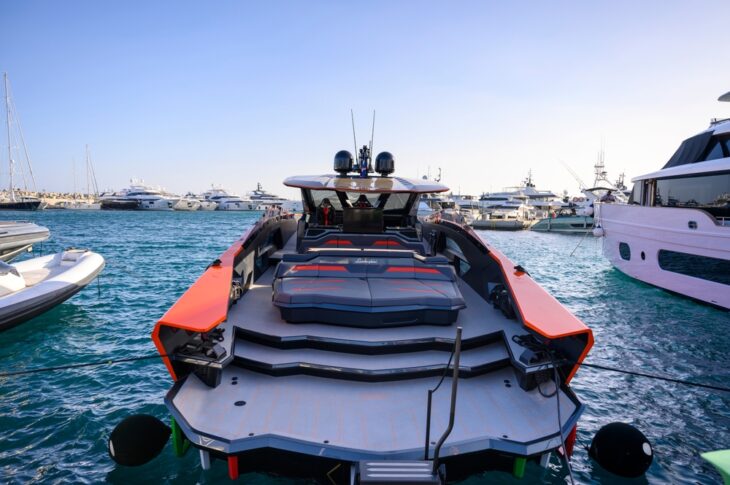
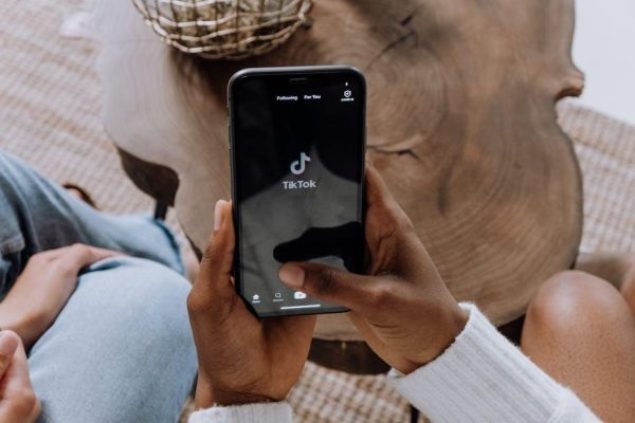
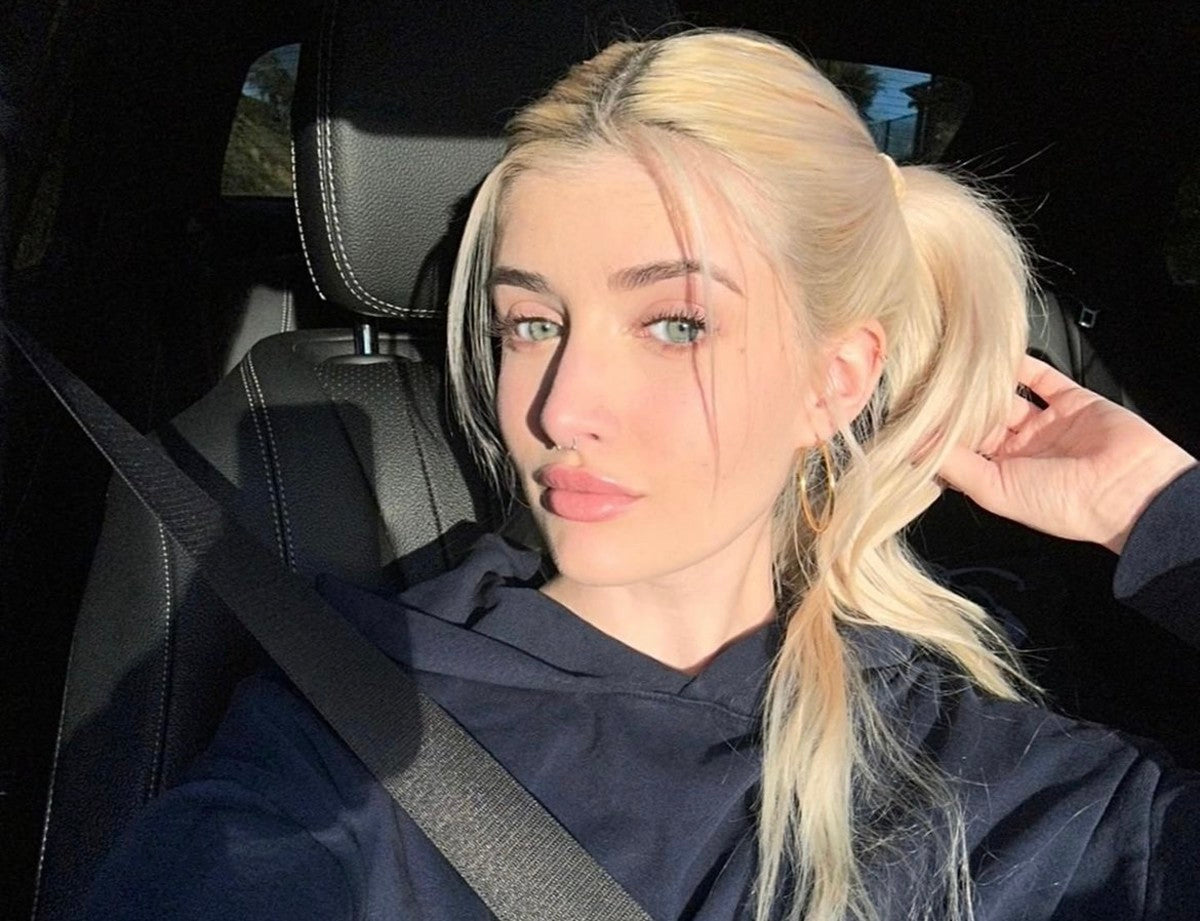
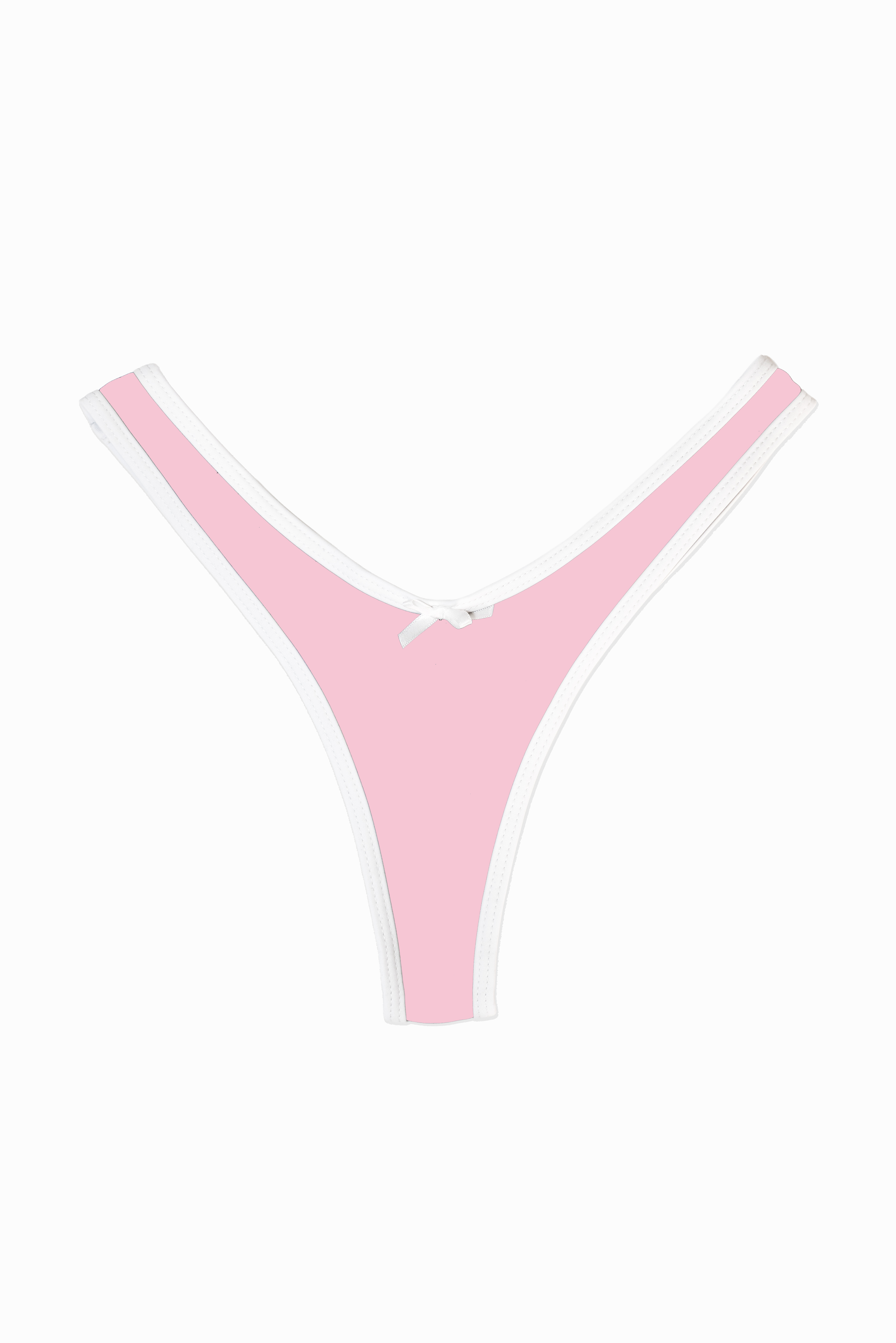
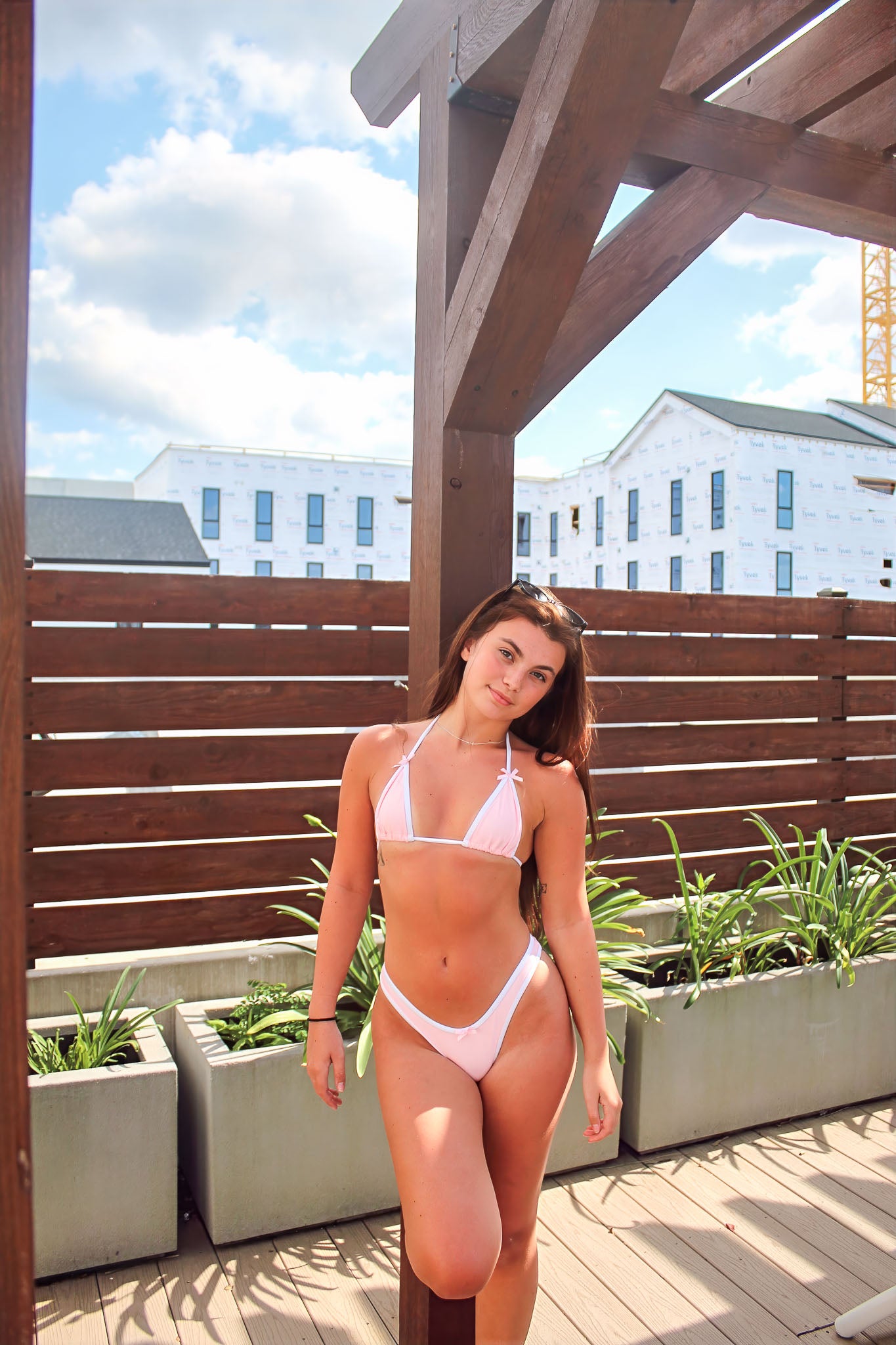
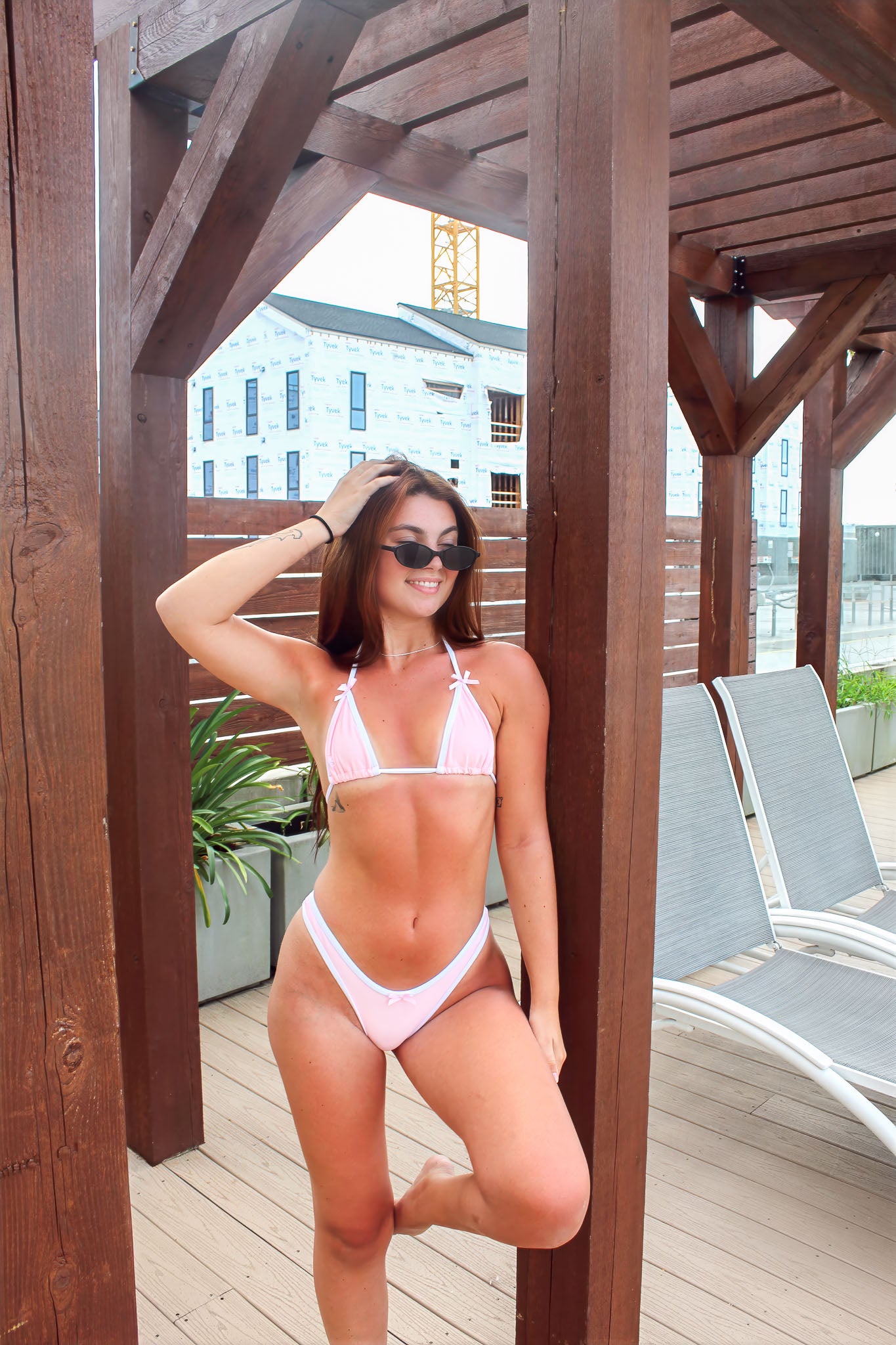
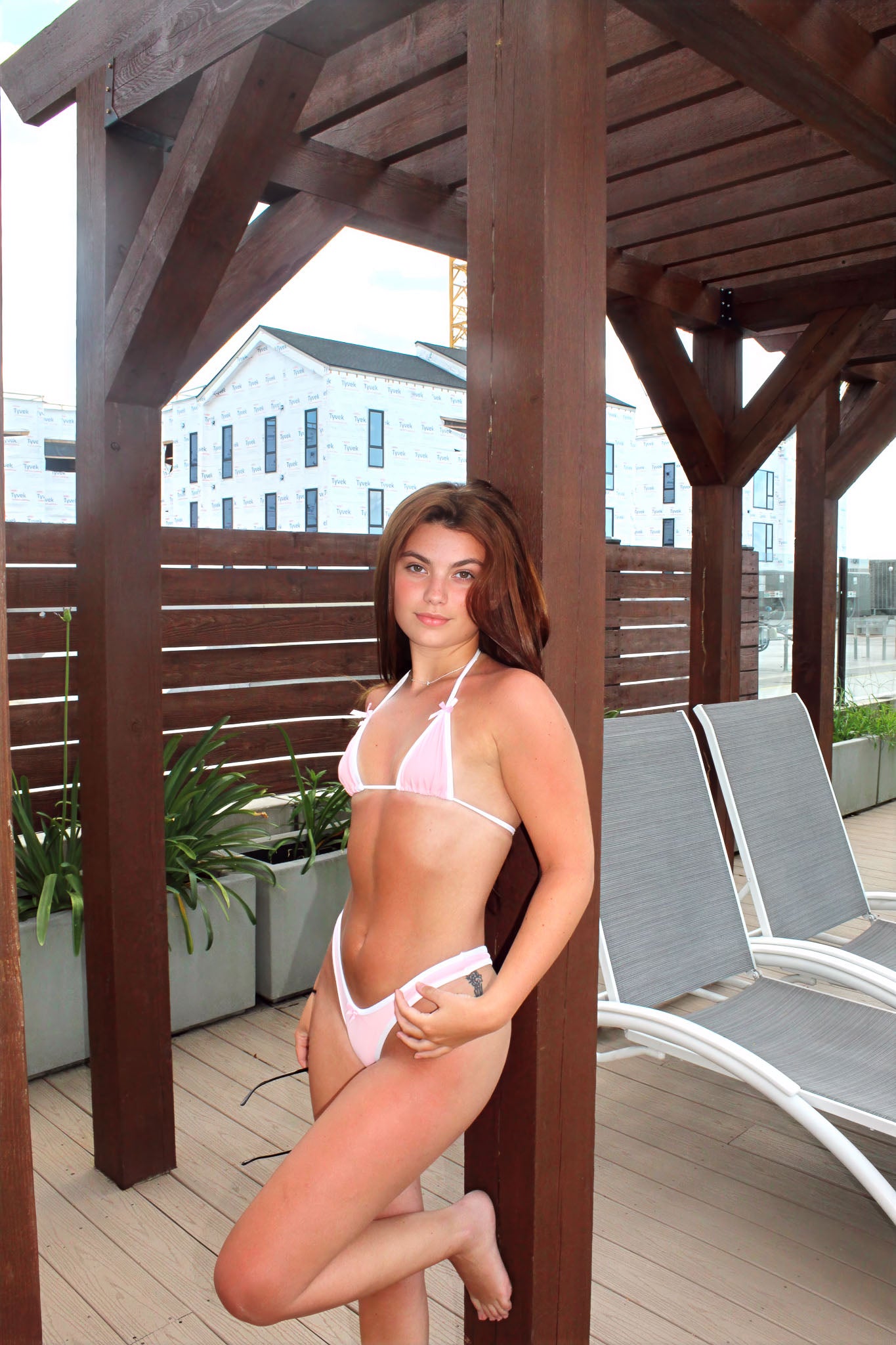





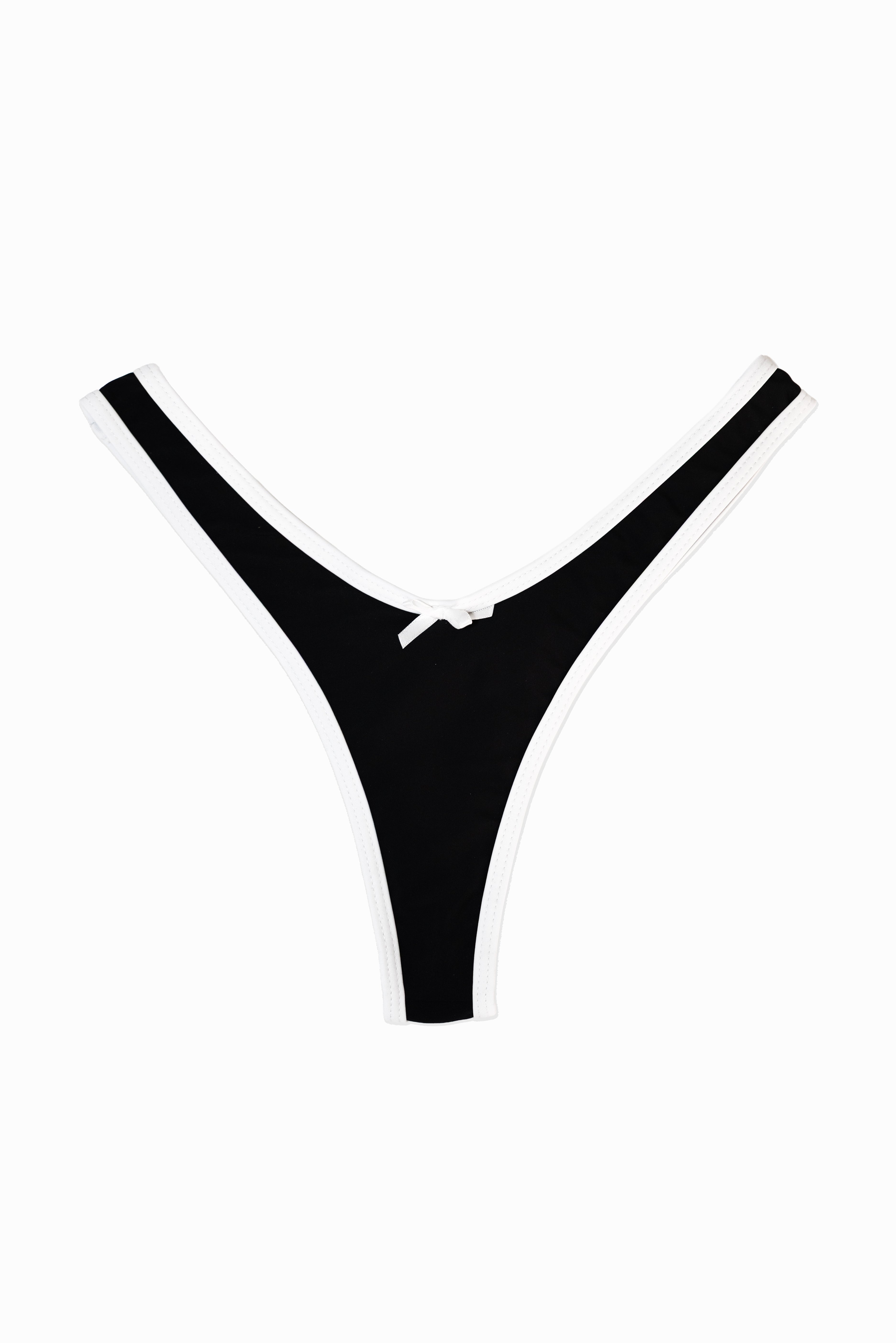
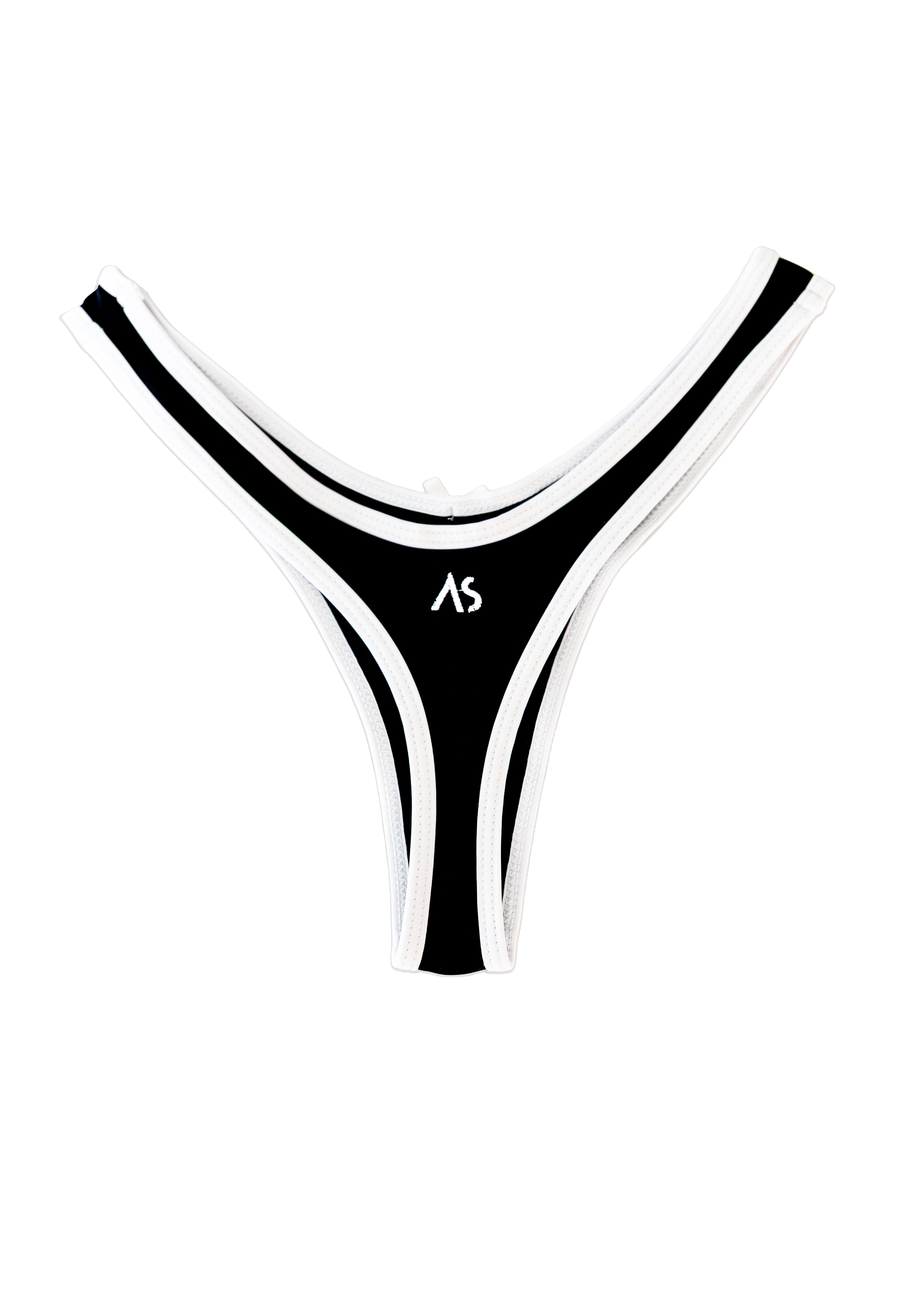
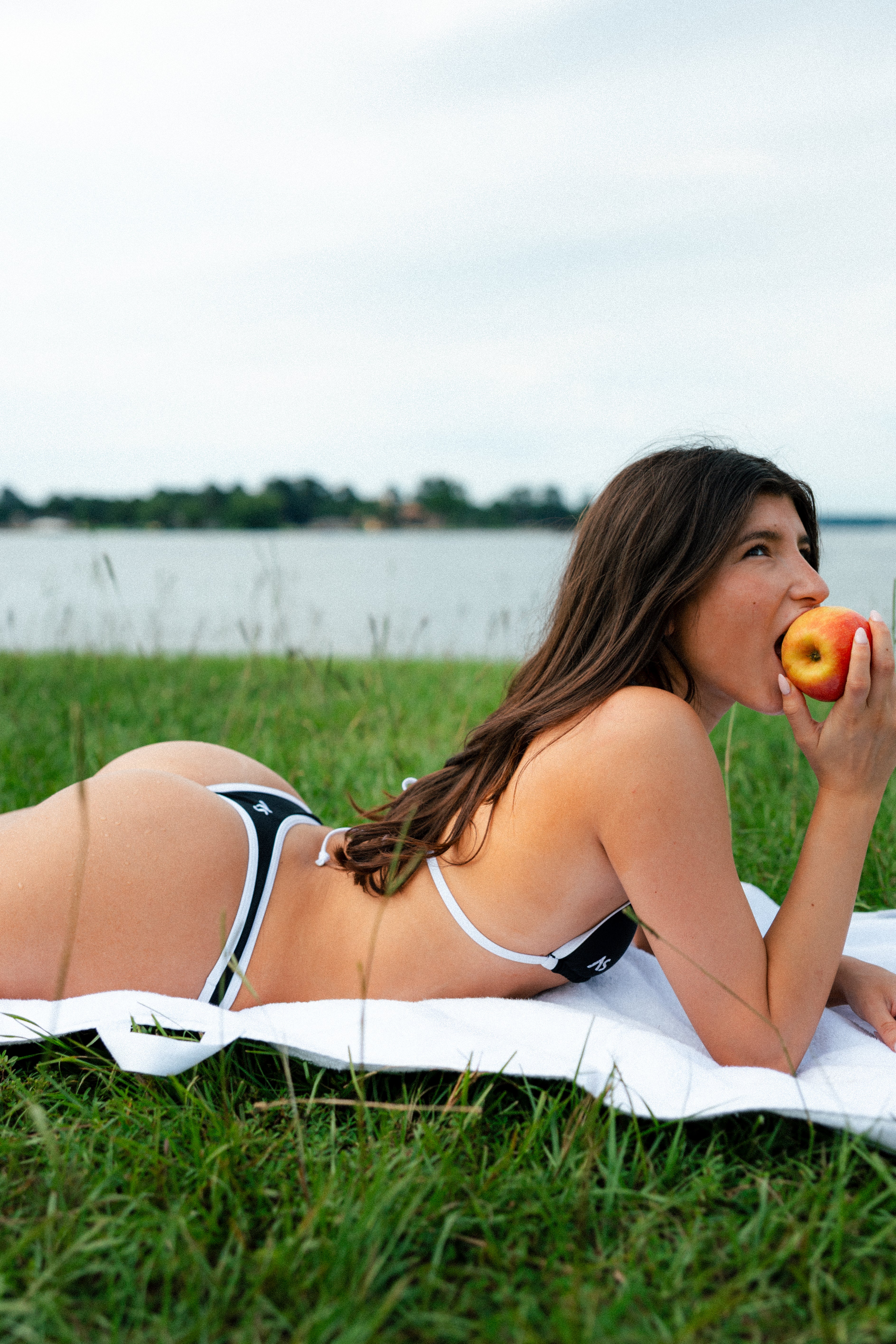

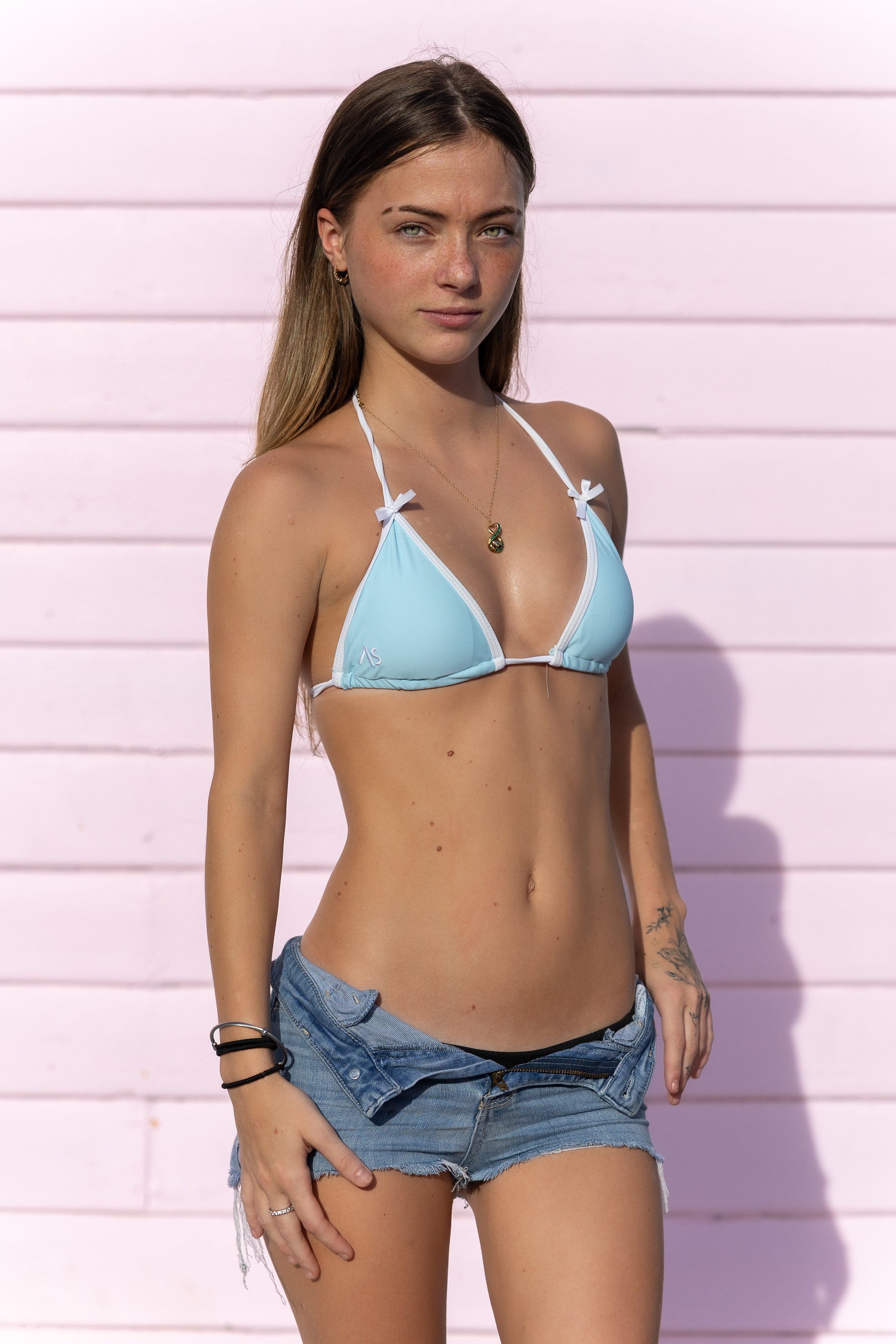
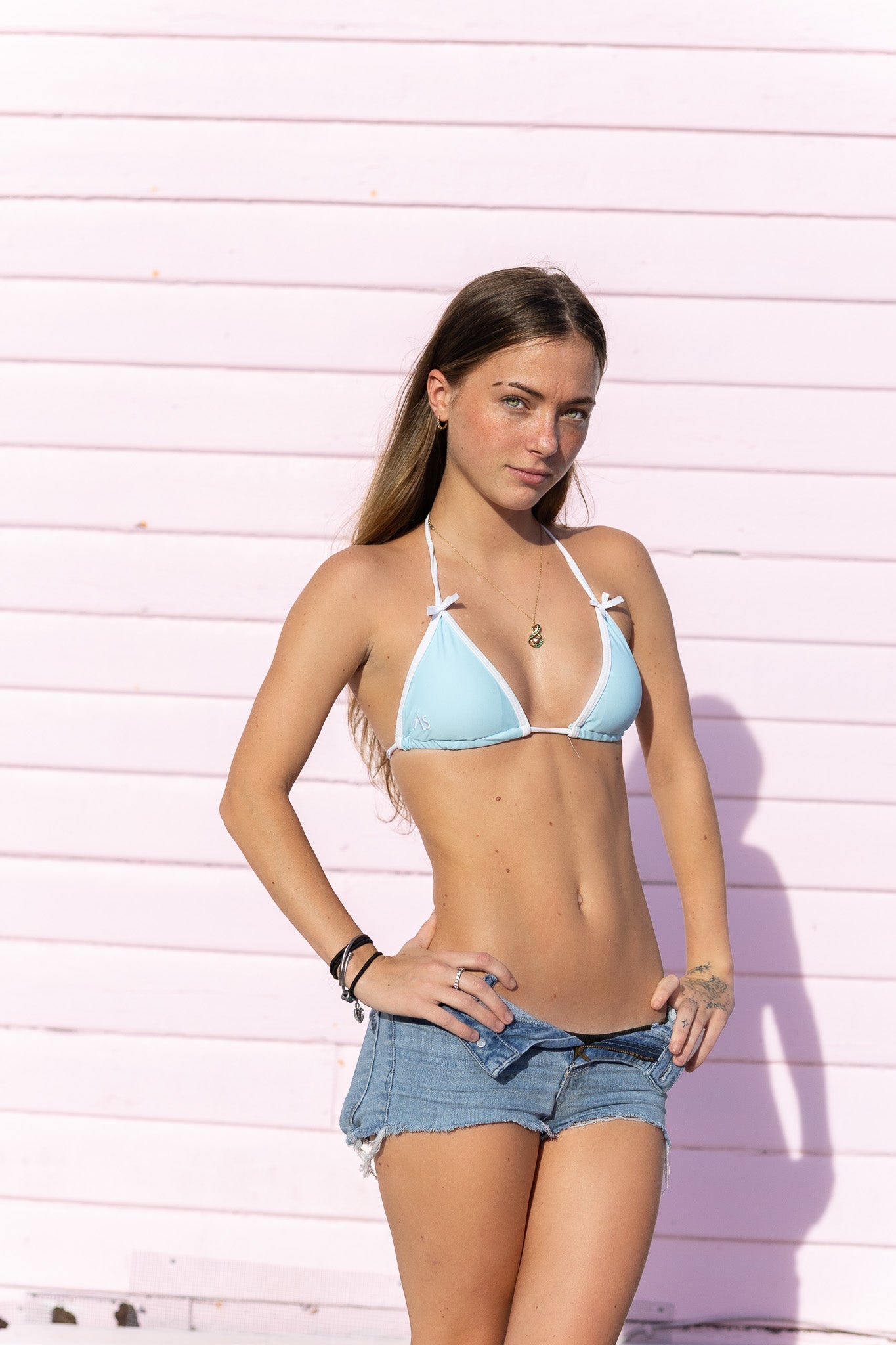
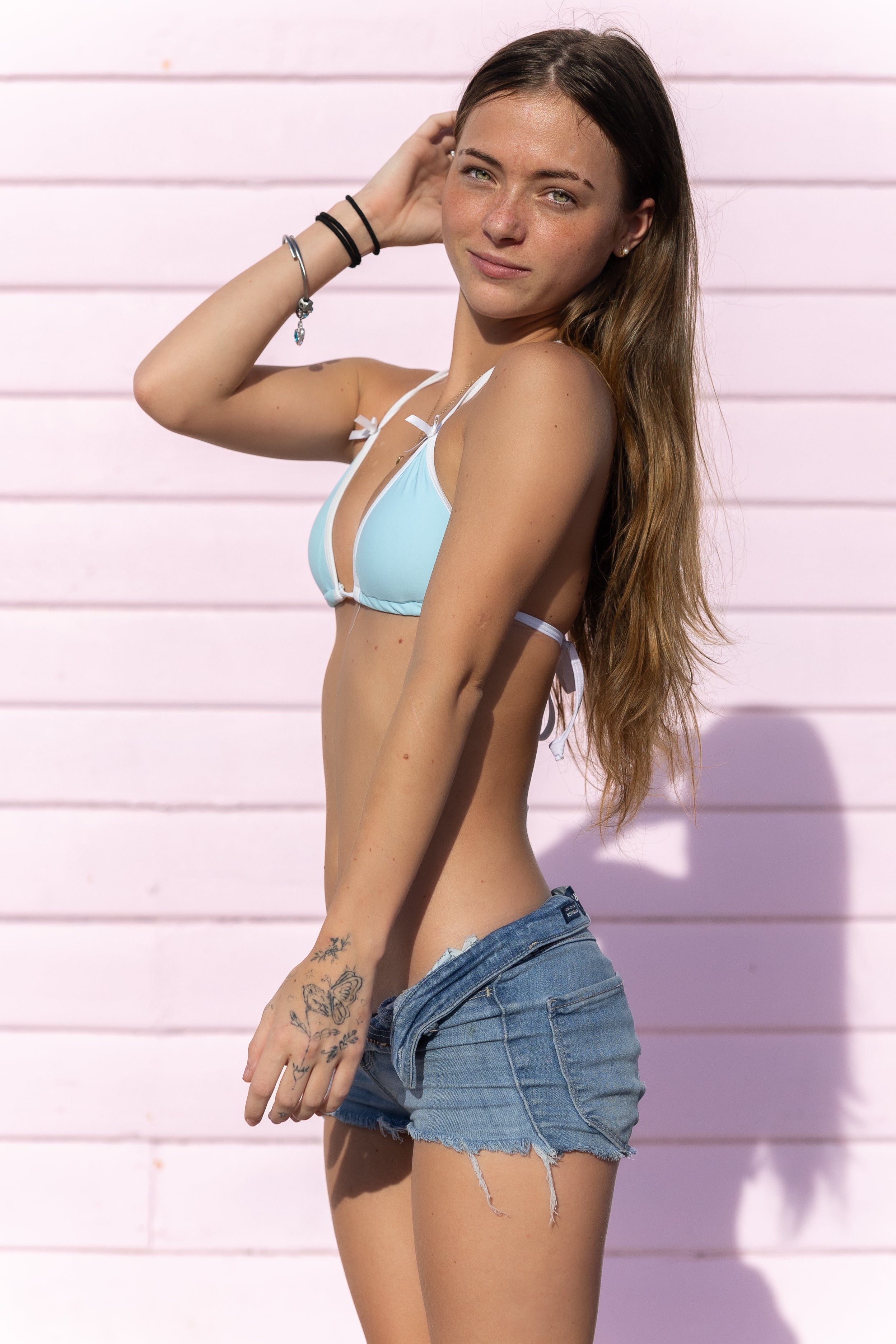




Share: